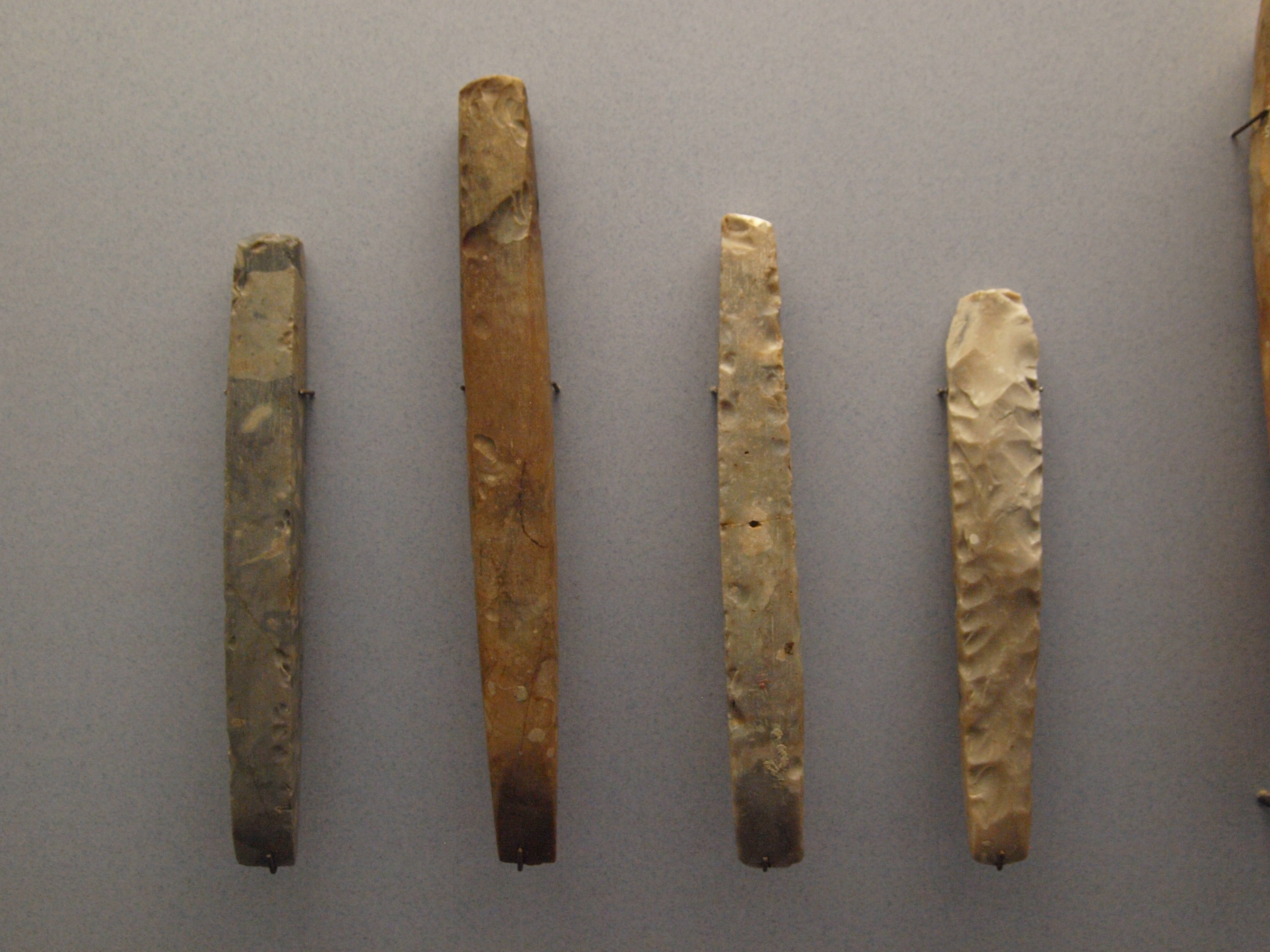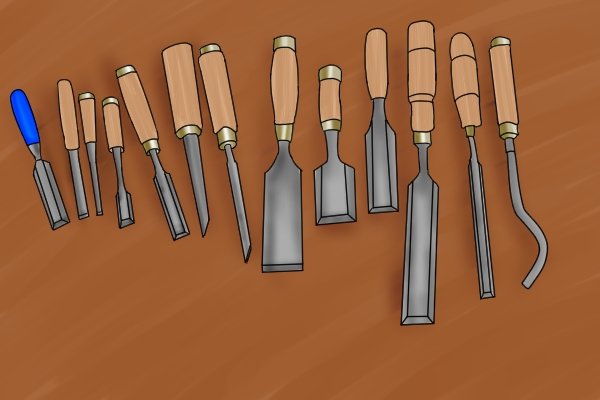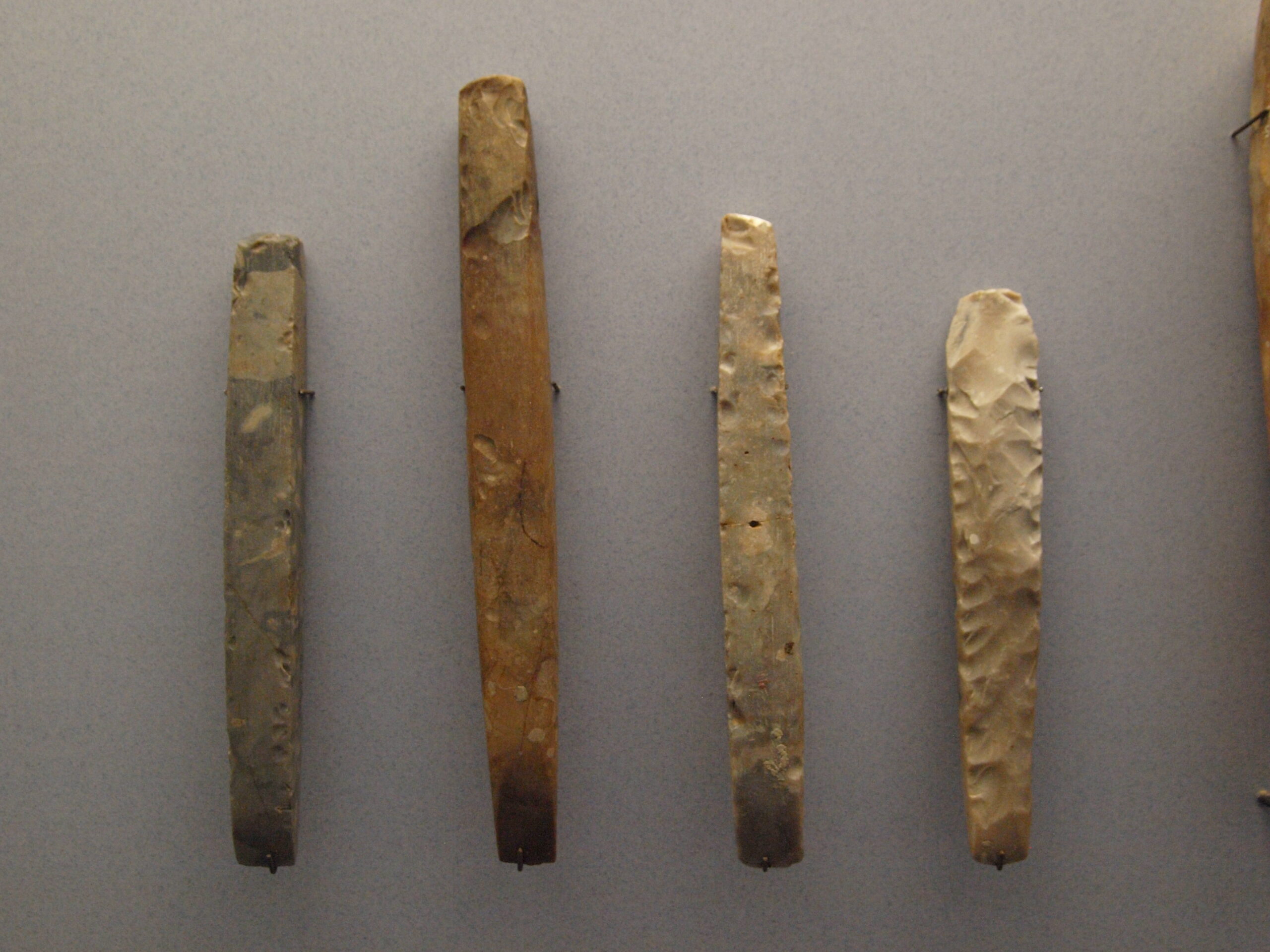Picture this: you’re on a woodworking project, creating something amazing with your own hands. You pick up a handy tool called a chisel, but have you ever wondered what chisels are made of? Well, wonder no more, because in this article, we’ll dive into the fascinating world of chisels and uncover the materials behind their construction. So, get ready to explore the exciting world of woodworking tools with me!
Chisels are like the superheroes of the woodworking world, helping us shape and carve wood with precision and finesse. But what gives these mighty tools their strength and durability? That’s what we’re here to uncover! From the handle to the blade, every part of a chisel serves a purpose and is made of specific materials that are carefully chosen to enhance their performance.
Whether you’re a woodworking enthusiast or just starting out, understanding what chisels are made of will not only deepen your knowledge but also help you make informed decisions when purchasing your own set. So, let’s embark on this journey together and explore the intriguing materials that make up the fantastic world of chisels!
Chisels are made of various materials depending on their purpose. Common materials used for chisels include high carbon steel, hardened steel, and tungsten carbide-tipped steel. High carbon steel chisels are versatile and suitable for general woodworking tasks. Hardened steel chisels are more durable and can withstand heavy-duty use. Tungsten carbide-tipped chisels have a longer lifespan and are ideal for cutting through tough materials like stone or concrete. Each material has its own advantages, so choose the one that suits your needs best.

Welcome to the World of Chisels: What Are They Made Of?
When it comes to woodworking and carving, chisels are indispensable tools. They allow craftsmen and hobbyists alike to shape and manipulate wood with precision and ease. But have you ever wondered what chisels are made of? In this article, we will dive into the materials commonly used in the manufacturing of chisels and explore their characteristics, benefits, and drawbacks. Whether you’re an aspiring woodworker or simply curious about the art of chiseling, this guide will provide you with valuable insights into the world of chisel materials.
1. Steel: The Traditional Choice
Steel is the most common material used for making chisels. It is durable, easy to sharpen, and capable of withstanding heavy use. There are several types of steel used in chisel production, including high carbon steel, alloy steel, and tool steel. High carbon steel is known for its hardness and edge retention, making it a popular choice for professional woodworkers. Alloy steel is another option that combines durability with corrosion resistance, while tool steel offers excellent toughness and edge retention.
When choosing a steel chisel, it’s important to consider the carbon content, as higher carbon levels result in harder, but more brittle, chisels. The hardness of the steel also affects how easily it can be sharpened. Overall, steel chisels are a versatile and reliable option for both beginners and experts alike.
2. Chromium Vanadium Steel: A Perfect Balance
Chromium vanadium steel is a popular choice for chisels that require a balance between durability and ease of sharpening. This alloy combines the strength and edge retention of steel with the toughness of vanadium. Chromium improves corrosion resistance, making these chisels suitable for use in humid environments. The alloy’s ability to hold an edge for extended periods without frequent sharpening is highly valued in woodworking.
Chromium vanadium steel chisels are often recommended for intermediate woodworkers who require a reliable and versatile tool without the need for constant maintenance. They are a great choice for general woodworking projects and are available in various sizes to accommodate different requirements and preferences.
3. Carbide-Tipped: The Durability Champion
For those tackling heavy-duty woodworking tasks or working with tough materials like concrete or masonry, carbide-tipped chisels are the way to go. Carbide is an extremely hard and wear-resistant material made from a combination of carbon and tungsten. This makes carbide-tipped chisels incredibly durable and capable of withstanding intense impact and wear.
Carbide-tipped chisels typically have a steel body with a carbide insert at the cutting edge. The carbide tip provides enhanced hardness and prolongs the chisel’s lifespan. Although they may be more expensive than traditional steel chisels, carbide-tipped chisels offer exceptional longevity, making them a worthwhile investment for professional woodworkers, construction workers, and enthusiasts who frequently tackle challenging projects.
4. Ceramic: The Cutting-Edge Option
Ceramic chisels are a relatively new entrant in the world of chisel materials. Made from advanced ceramic compounds such as zirconium oxide, ceramic chisels offer exceptional hardness, edge retention, and resistance to wear. They are commonly used in industries where precision and smooth finishes are essential, such as fine woodworking and the production of musical instruments.
One of the main advantages of ceramic chisels is their ability to maintain a sharp edge for a long time, reducing the need for frequent sharpening. However, they can be prone to chipping if subjected to excessive force or used incorrectly. Due to their specialized nature and higher cost, ceramic chisels are primarily recommended for professionals and experienced craftsmen who require the utmost precision in their work.
5. Titanium: Lightweight and Versatile
Titanium chisels are gaining popularity among woodworkers who value a lightweight tool that doesn’t compromise on strength and durability. Titanium is known for its high strength-to-weight ratio, making it an excellent choice for those seeking ease of use and reduced hand fatigue during long carving sessions.
While titanium is not as hard as steel, it still provides sufficient sharpness and edge retention for most woodworking tasks. Titanium chisels are also corrosion-resistant, making them particularly suitable for outdoor projects or environments with high humidity. Woodworkers who value convenience and maneuverability often opt for titanium chisels in their toolkit.
6. Bimetal: Combining the Best of Both Worlds
Bimetal chisels offer a unique combination of materials, typically consisting of a steel body with an edge made of a different, more durable material such as carbide. This construction allows for the benefits of each material to be maximized, resulting in chisels that are both robust and long-lasting.
The steel body provides flexibility and strength, while the added carbide or other materials at the edge enhance the cutting performance and durability. Bimetal chisels are often used for heavy-duty applications and can handle a wide range of materials, including wood, metal, and ceramics. They are a popular choice among professionals who need a versatile chisel that can tackle various tasks with ease.
7. Specialty Materials: Tailored for Specific Purposes
Depending on the intended use, chisels may be made from specialty materials to address specific demands. For instance, woodworking chisels designed for carving intricate details may feature laminated steel blades with a softer core and harder outer layers. This construction provides the necessary sharpness at the edge while maintaining the durability and strength required for intricate cuts.
Other specialty materials include diamond-coated chisels for working with hard materials such as glass or stone, and laminated carbon fiber chisels for those seeking an ultra-lightweight option. These specialty chisels cater to the unique needs of specific applications and offer craftsmen the ability to achieve exceptional results in their work.
The Importance of Choosing the Right Chisel Material
Now that you have a better understanding of the different materials used in chisel manufacturing, it’s important to consider the factors that should guide your decision when selecting a chisel for your woodworking projects.
1. Consider Your Project Requirements
Every woodworking project has its unique demands. Consider the type of wood you’ll be working with, the level of precision required, and the duration of the project. For delicate cuts and intricate details, you may opt for a chisel with a harder blade material. Alternatively, if you’re working on larger, more robust pieces, you may favor a chisel with enhanced durability and edge retention.
2. Evaluate Your Skill Level
Your skill level as a woodworker should also influence your choice of chisel material. Beginners may benefit from the versatility and ease of sharpening offered by steel chisels, while intermediate and advanced woodworkers may prefer the advantages of more specialized materials like chromium vanadium steel or carbide.
3. Balance Durability and Maintenance
Consider how frequently you’re willing to sharpen and maintain your chisels. Some materials, like ceramic and carbide, offer longer edge retention, while others require more regular sharpening. Strike a balance between durability and maintenance based on your preferences and available time.
4. Budget Constraints
Finally, factor in your budget when selecting a chisel material. While some materials may offer superior performance, they often come with a higher price tag. Consider your woodworking goals and investment capabilities to find the right balance between quality and cost.
Tips for Extending the Lifespan of Your Chisels
Regardless of the material you choose, proper care and maintenance will significantly extend the lifespan of your chisels. Here are a few tips to keep in mind:
1. Sharpen Regularly
Keep your chisels sharp by sharpening them regularly. A dull chisel can cause accidents and make your work more challenging. Invest in a good sharpening system or learn how to use sharpening stones effectively.
2. Store Properly
Store your chisels in a dry, clean, and well-organized toolbox or rack. Avoid leaving them on damp surfaces or exposed to extreme temperatures, as this can lead to corrosion and degradation.
3. Use them for Their Intended Purpose
Avoid using your chisels for tasks they were not designed for. Different chisels have different strengths and limitations, so using them appropriately will prevent unnecessary wear and damage.
4. Protect the Cutting Edge
When not in use, protect the cutting edge of your chisels by using blade guards or keeping them in a dedicated compartment. This will prevent accidental nicks or chips and maintain the chisel’s overall performance.
The World of Chisels: Endless Possibilities
Now that you’re familiar with the diverse materials used in chisels and how they can impact your woodworking projects, you’re ready to embark on your chiseling journey. Remember to assess your project requirements, skill level, and budget when choosing the right chisel material. With the right chisel in your hand and a little practice, you’ll unlock a world of possibilities and create beautiful works of art with confidence and precision.
Key Takeaways: What Are Chisels Made Of?
- Chisels are typically made of high-carbon steel.
- Some chisels are made of titanium, which is lightweight and durable.
- Woodworking chisels may have wooden handles to provide a comfortable grip.
- Chisels used for stone or metalworking often have metal handles for better control.
- Chisels can also be made with specialized materials for specific tasks, like diamond-tipped chisels for masonry work.
Frequently Asked Questions
When it comes to chisels, understanding the materials they are made of is crucial. Here are some common questions and answers about what chisels are made of:
1. What materials are chisels usually made of?
Chisels are typically made from high-carbon steel or tool steel. These materials are chosen for their durability and ability to hold a sharp edge. High-carbon steel contains a higher percentage of carbon, making it harder and more resistant to wear. Tool steel, on the other hand, is a type of alloy steel that is specifically designed for use in tools and machinery.
Some chisels may also have a handle made from wood or other materials for better grip and control. Overall, the choice of materials depends on the specific application and desired performance of the chisel.
2. Are there different types of steel used in chisels?
Yes, there are different types of steel used in chisels. High-speed steel (HSS) is one such type, known for its ability to withstand high temperatures during use. HSS chisels are often used for cutting harder materials like metal, as they can retain their cutting edge even at high temperatures.
Another type is chrome vanadium steel, which combines the strength and durability of high-carbon steel with the added corrosion resistance of chromium and vanadium. This makes it a popular choice for chisels used in woodworking applications where moisture resistance is important.
3. Can chisels be made from other materials?
While steel is the most common material for chisels, there are other variations available. For example, ceramic chisels are used in specialized applications like working with glass or cutting hard materials like porcelain. These chisels are made from a dense ceramic material that is extremely sharp and wear-resistant.
Carbide-tipped chisels are another option, where the cutting edge is made from tungsten carbide. These chisels are incredibly durable and can be used for demanding tasks such as removing tough materials like concrete or stone.
4. What are the advantages of using steel chisels?
Steel chisels have several advantages. First, they are highly durable and can withstand rigorous use without losing their cutting edge. Steel is also relatively easy to sharpen, ensuring that the chisel can be kept in optimal condition for efficient cutting. Additionally, steel provides good shock resistance, making it suitable for heavy-duty applications where the chisel may encounter impact.
Furthermore, steel chisels offer versatility as they can be used for various tasks, from woodworking to metalworking. They are also available in a wide range of sizes and shapes to suit different cutting requirements.
5. How should chisels be maintained?
To keep chisels in good condition, regular maintenance is essential. After each use, it’s important to clean the chisel by removing any debris or buildup. This can be done using a brush or cloth. If the chisel gets wet, it should be dried thoroughly to prevent rusting.
Sharpening the chisel regularly is also crucial. There are various sharpening tools available, such as sharpening stones or honing guides, which help maintain a sharp cutting edge. It’s recommended to follow the manufacturer’s guidelines or seek advice from experienced users to ensure proper sharpening techniques.

Summary
Chisels are important tools used to shape and carve different materials, like wood and stone. They are typically made of strong materials, such as steel or high-carbon steel, which make them durable and long-lasting. Some chisels even have special coatings, like chrome or titanium, to make them even stronger.
Different types of chisels can have different shapes and sizes, depending on their specific purpose. For example, a wood chisel has a beveled edge for carving wood, while a cold chisel has a flat edge for cutting metal. It’s important to choose the right type of chisel for the job to ensure safe and effective use. So, next time you see a chisel, remember that it’s made of a tough material and comes in various shapes for different tasks!
